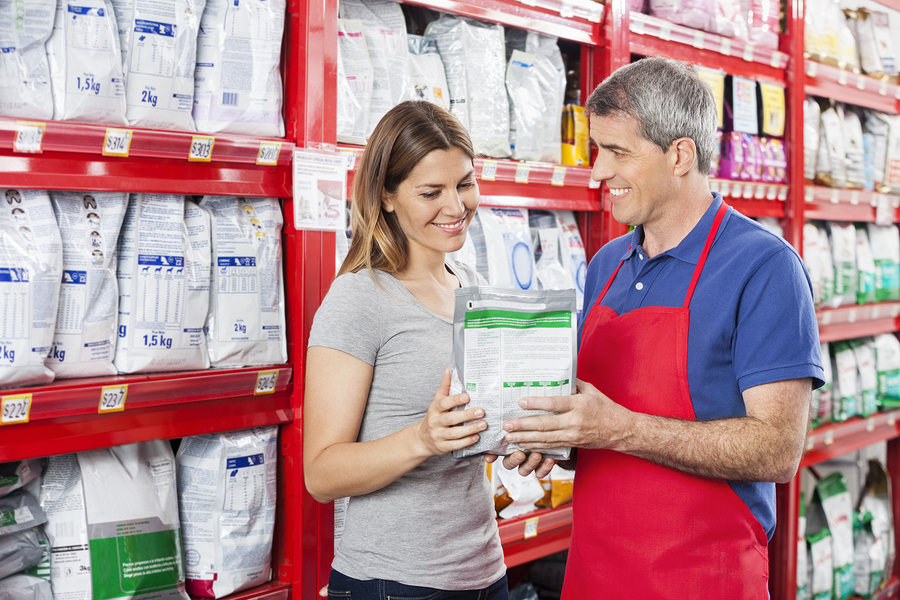
This post may contain affiliate links. We are compensated for referring customers to our affiliate partners.
Much like us, our dogs have their own nutritional requirements in order for them to live a full and healthy life. However, not all pet foods are able to satisfy these requirements even when marketed as ‘natural’ or ‘new and improved’.
In order for you to choose the best dog food for your dog’s needs, here are a few things you should know.
Nutritional Requirements Or The Lack There Of
You do not have to look hard to find dog food labeled as ‘natural’, ‘organic’ or ‘holistic’. Unfortunately, these labels may not mean what you think they mean. In the United States, there is very little regulation of commercial pet food. Neither the FDA nor the USDA will get involved in what is put into the majority of pet food.
While it is true that the AAFCO has established a minimum for the nutritional requirements for domesticated animals, even they are not as concerned about the quality of ingredients put into the formula of pet food as they should be. Containing the bare minimum of what your dog needs and giving your dog the optimal nutrition are two entirely different goals.
That aside, even those that do not follow the AAFCO nutritional guidelines do not have much to lose. Making it even more important that you keep an eye on labels.
Dog Food Marketing Ploys To Watch Out For
As mentioned before, labels such as ‘natural’ or ‘organic’ doesn’t mean much when it comes to your dog food. However, dog food companies are betting on these labels in order to attract dog owners that are blissfully unaware of what they actually mean. This marketing ploy is used to make their dog food seem healthier or better than the rest. Yet, since there is no guideline or requirements needed for these labels, they do not hold any weight when it comes to the nutritional value.
This isn’t the only marketing ploy you should be looking out for. A large portion of dog food companies also like to try and cash in on making their food look ‘new’, ‘improved’ and ‘advanced’. This makes this dog food seem better than the rest simply because it has been updated in some way. However, without knowing what exactly has been changed in the formula, you cannot know whether these changes are good for your dog. In fact, you cannot even be sure that anything has been changed in the formula at all.
Shopping Smart For Your Dog Food
The first thing you can do to make better choices in your dog’s diet is to ignoring the labeling claims on the dog food and look at the ingredients instead. An AAFCO certification can assure you that the food at least meets the basic nutritional requirements for vitamins and minerals. However, your dog deserves more than just the bare minimum.
As a general rule, the longer the ingredient list is, the more likely that the formula is filled with something that is biologically inappropriate, allergenic, and possibly toxic to your beloved pet. Still, there are a few more things you should be looking out for:
1. Meat, meat, and more meat
Dogs are well-known as being carnivores; thriving on a meat based diet. They simply do not have any need for carbohydrates. Yet, it is pretty common to see grains being added into dog food because it is cheaper than meat and helps to hold the kibbled bits together rather than for nutritional value.
The source and quality of the protein in the dog food’s formula is pretty important when it comes to your pet’s health. Take a look at the whole food sources found at the very top of the ingredient list like ‘chicken’, ‘lamb’ or ‘beef’. All meat and fat sources should be identified by species. If a formula uses any unidentified sources such as ‘meat’ or ‘poultry’, you probably should avoid it.
2. Vegetables you can count on
The next thing for you to look out for is the type of vegetables used in formula. Avoid any dog food that chooses to use corn, wheat, or beep pulp. While it is recommended that you choose grain-free dog foods, a whole grain source like brown rice is fine too. Grain-free dog foods will typically use potatoes as the starch needed to hold the food together during processing and will be a healthier option for your pet. Avoid any formulas that use ‘grain fragments’, these are just non-nutritive fillers.
3. Avoid allergenic sources
You should avoid any dog food that contains corn or soy in the formula. Corn is just a cheap filler ingredient that has no nutritional value for your dog. That aside, corn is a well-known allergenic for dogs and could make your pet uncomfortable or sick. If that wasn’t bad enough, soy is an estrogenic and can really wreak havoc on your dog’s endocrine system.
4. Say bye to by-products
Any dog food containing by-products, especially those that will not specify the type of meat within their meat by-product. Meat by-products could contain anything from hooves to hair to even tumors that ended up getting mixed in. Save your dog the stomach ache and avoid the by-product label.
5. No artificial anything
When looking for the best dog food for your pet, avoid anything with artificial colors, flavors, sweeteners, or preservatives, especially if they happen to be known carcinogens. When checking the dog food label, look out for names like BHT, BHA, ethoxyquin, and propyl gallate to be safe. Instead, try to find foods that are preserved with vitamins C and E that are also known as tocopherols.
